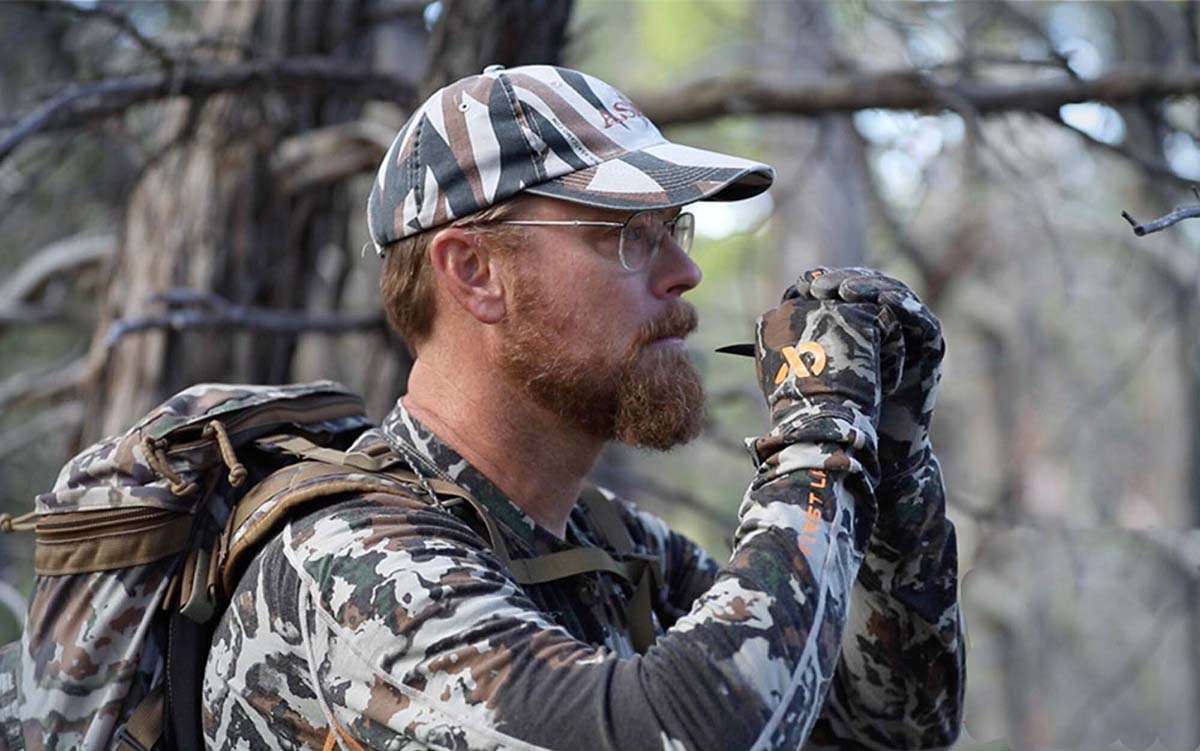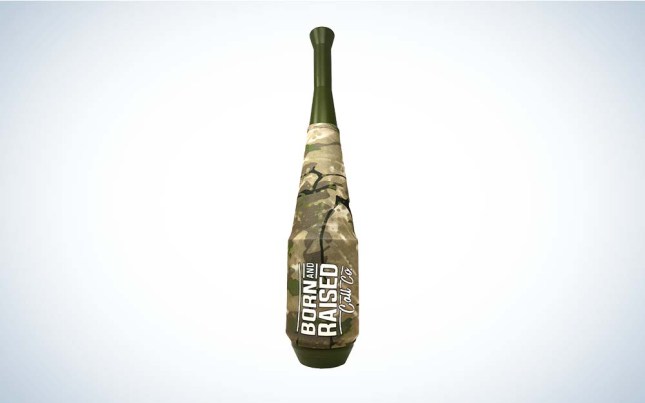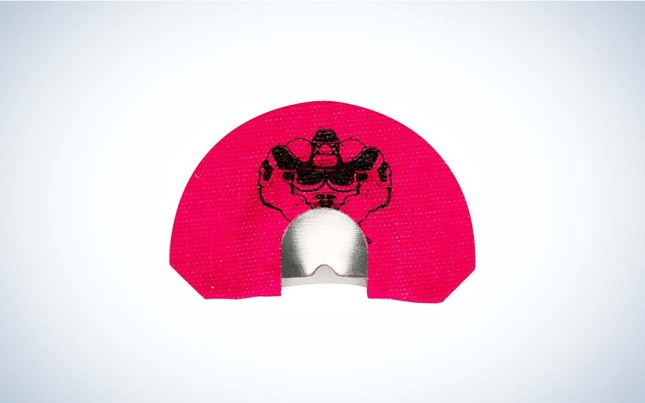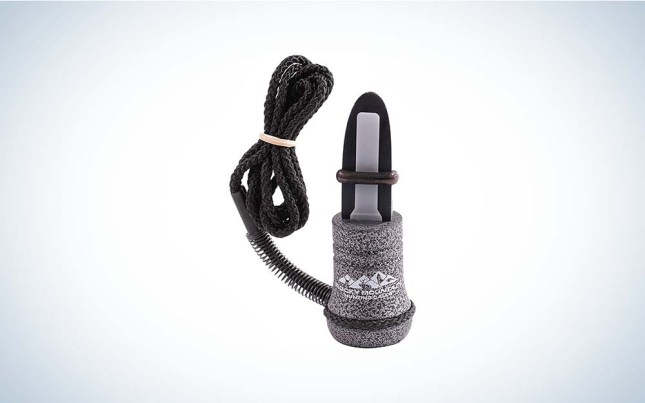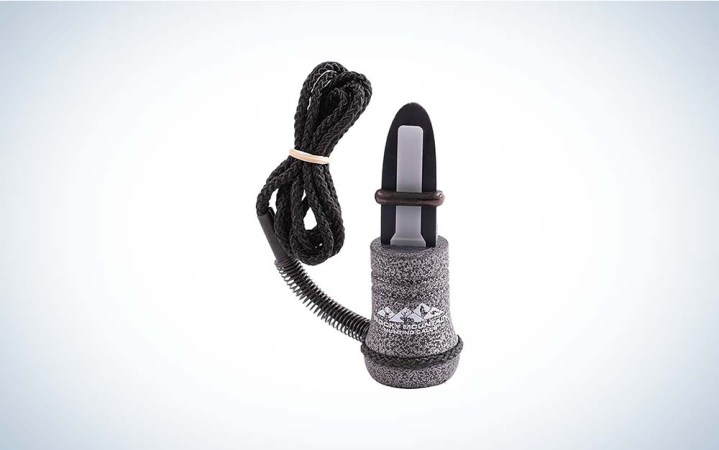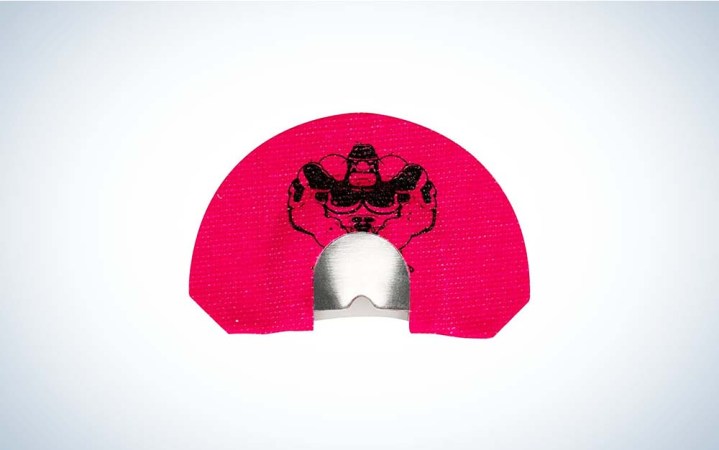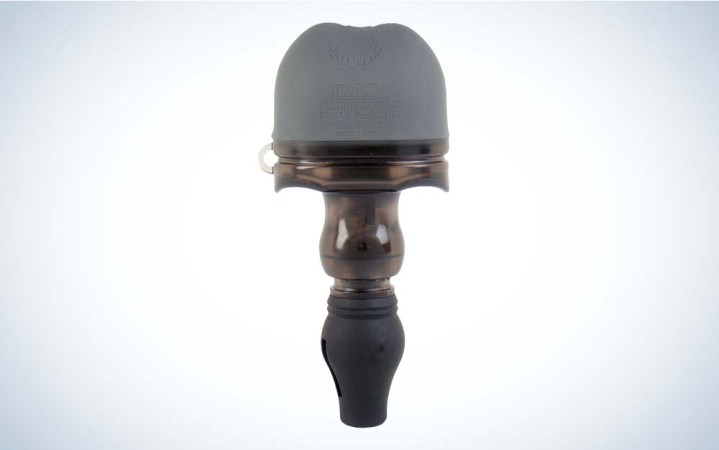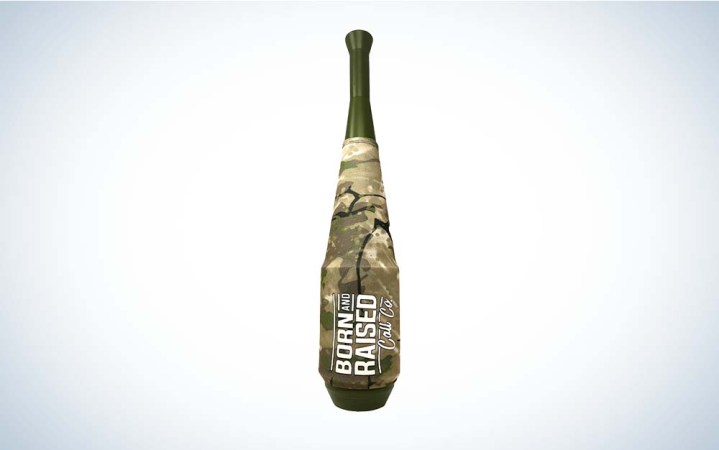We may earn revenue from the products available on this page and participate in affiliate programs. Learn More ›
Ripping a bugle and hearing a bull respond is an experience like no other. It’s why elk hunters climb mountains every September. But don’t expect your calls to work every time. If you’re trying to pick a fight with the herd bull, you’ll need a bugle tube to piss him off and bring him into range. But if you want to sweet talk a satellite that’s been beat down by every bull on the mountain, you’re better off with the soft chirps of reassuring cow calls. Ask any consistent elk hunter which call works best, and they’ll tell you it depends on the elk. That’s why it’s important to have several options. I interviewed a few elk hunting pros on their go-to calls to find out which ones they carry every September. You’ll have to find which ones work best for you, but starting with some of the best elk calls available can help shorten that task.
- Best Open Reed: Rocky Mountain Hunting Calls Heartbreaker
- Best Diaphragm: Phelps Game Calls Signature Pink AMP
- Best for Beginners: Primos Hoochie Mama
- Best Bugle Tube: Born And Raised Outdoors The Bomb Bugle
- Best Cow Call: Native by Carlton Greenie Weenie
How I Chose the Best Elk Calls
For this review, I interviewed experts who have more than a century’s worth of combined experience hunting and calling elk. I also considered the various regions the experts hunt and the different hunting and calling tactics they use.
Best Elk Calls of 2023: Reviews and Recommendations
Best Open Reed: Rocky Mountain Hunting Calls Heartbreaker
Key Features
- Wide reed and sound board
- Lip positioning ring
- Aluminum barrel
Pros
- Crisp, clean sounds
- Easy to run
- Super realistic
Cons
- Requires hand use
Die-hard elk hunter and guide Chris Roe consistently calls and kills elk all over the West. He even teaches new hunters through his online platform, Roe Hunting Resources, everything they need to know about calling elk, as well as turkey and deer hunting tactics. When it comes to calling, he reserves most of it for cow calls. It’s not that he’s opposed to bugling, but he prefers sticking to cow calls even if he encounters a testosterone-crazed bull. He’s used dozens of calls over the years, but his favorite by far is the Heartbreaker from Rocky Mountain Hunting Calls.
“Ninety-nine percent of my calling is with an open reed style call,” Roe says. “And there’s no comparison when it comes to the Heartbreaker. That call is so crisp and clean.”
Roe praised the Heartbreaker for its easy use. He attributes this to the wide reed design, which he’s found to be more user-friendly than a lot of other competitors.
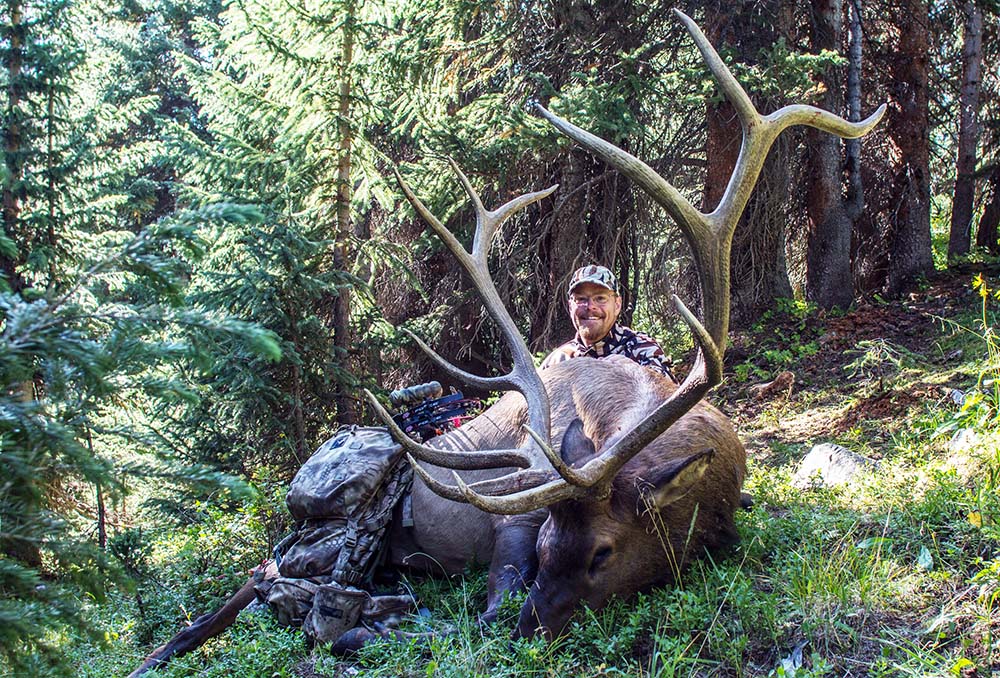
“For more than ten years I ran the Primos Hyper Lip Single, and it’s an awesome call,” he says. “But the Heartbreaker outperforms any other open reed call that I’ve used.”
The Heartbreaker allows Roe to make all the cow sounds on one call, and its nasally tone adds an element of realism when he’s making mews or chirps, which sets it apart from other calls. Roe also recommended the Phelps EZ Suk’r for beginners or an additional call for experienced hunters.
“I think the EZ Suk’r is legit. It’s definitely going in my belt pack this fall, he says.”
Best Diaphragm: Phelps Game Calls Pink Signature AMP
Key Features
- Tight latex stretch
- One-size-fits-most design
- Utilizes AMP frame
Pros
- Fits a majority of hunters
- Versatile
- Makes loud and subtle cow calls
Cons
- Tight reed might be difficult for beginners to use
One of Jason Phelps’ most memorable hunts happened last year, chasing elk in New Mexico. Of course, he was running his Pink Signature Amp diaphragm.
“It was an unbelievable scenario,” Phelps says. “All the elk were extremely responsive, and they would roar back at every call. That Pink Amp is just so versatile. On that particular hunt I would make whiny cow calls or roaring bugles, and that bull I ended up shooting would cut me off. So, I just kept roaring back at him. Finally, he couldn’t stand it and came right in.”
Phelps designed the Pink Amp diaphragm to his mouth’s specs. This custom fit allows him to run the call better than others and make all the elk vocalizations. It will do everything he wants a diaphragm to do, he says.
While Phelps loves this call, he acknowledged that every call fits differently from individual to individual, including the Pink Signature AMP. It’s important to buy a few different calls and see which one works best with your mouth size, he says.
“Not everyone will be able to work this call the way they want,” Phelps says. “But we did design it to fit most users. It’s built on our AMP frame with a radius curve that’s kind of the sweet spot when it comes to size. One size fits most, is what we say.”
Best for Beginners: Primos Hoochie Mama
Key Features
- Push operation
- 100 percent freeze proof
- Tunable design
Pros
- Easy to use
- Versatile
- Realistic sounds
Cons
- Not as loud as other options
Will Primos has arrowed his fair share of bulls, and his preferred method of calling them is with a cow call. He believes it’s the most appealing call to rutting bulls, and he designed the Primos Hoochie Mama to make the full range of cow sounds in an easy-to-use push style that everyone from beginners to experienced hunters can use.
“This call is so easy and sounds so accurate that it’s a no brainer,” he says. “You just push it with your thumb, and that’s it. But you can also make short mews, chirps, or whines depending on how you press the call. If I could only have one call, it would be this one.”
While Primos is a huge fan of the Hoochie Mama, he recognizes some of its drawbacks.
“It’s great for one handed use and doesn’t require a ton of movement, but it doesn’t make serious estrus sounds like open reed calls,” he says. “For beginners or hunters who struggle with diaphragm calls, the Hoochie Mama has more than enough appeal for bulls, and because of its easy-to-use design, you can make clean consistent sounds every time.”
Aside from not overcalling, Primos always stresses that hunters remember wind direction and thermals while calling.
“All the sad stories on elk hunting involve an elk’s nose,” he says. “When a bugling bull is coming in it’s easy to get caught up in the moment and forget about the wind or thermals, especially if it’s earlier in the morning or late evening. If you don’t remember to check those, you’ll end up blowing your scent directly to that bull, and it won’t matter what call you’re using.”
Best Bugle Tube: Born And Raised Outdoors The Bomb Bugle Call
Key Features
- Carry cord and cover included
- Weight: 8.2 ounces
- Thick side walls
Pros
- Produces low but loud sounds
- Lightweight
- Mouthpiece should fit most
Cons
- Tube runs a little bulky
Kody Kellom of Born And Raised Outdoors would feel lost without a bugle tube, he says. And his go-to that he helped design, which boasts a huge sound chamber, is fittingly named The Bomb.
“I wanted a bugle tube that is loud, carries a solid tone, and has the back pressure to sound as realistic as possible,” Kellom says. “The Bomb does exactly that, and I like the size and weight of it for long backcountry hunts.”
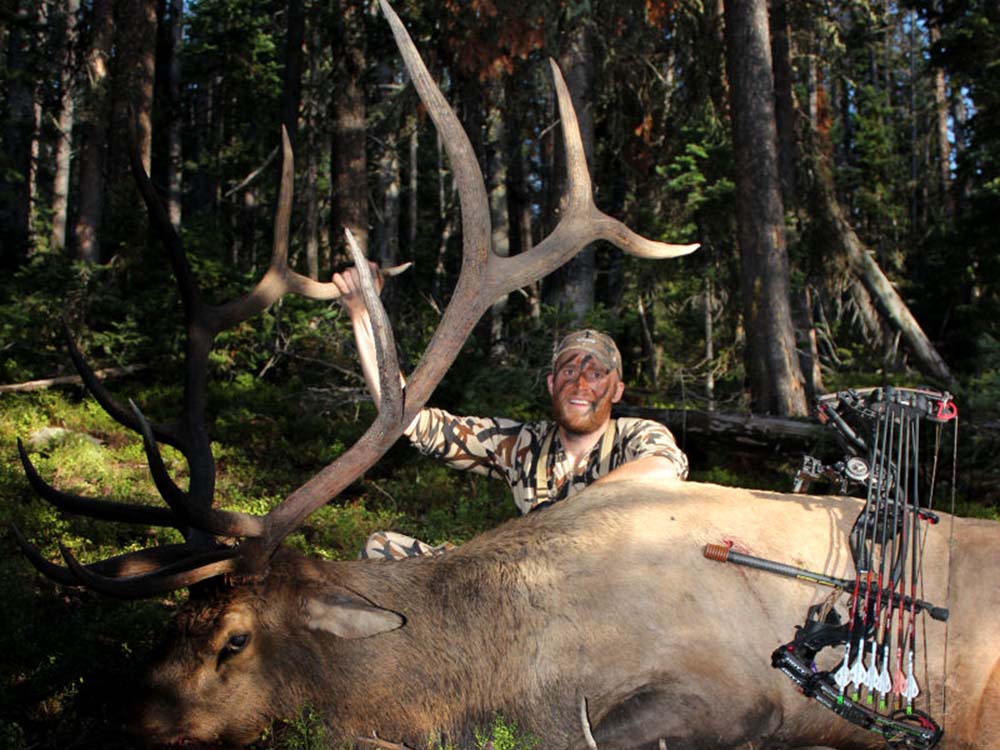
One aspect of The Bomb that Kellom emphasizes is the large diameter of the sound chamber. He notes that the shape allows you to create those big, hollow bellows that are critical for bugling or calling distant bulls. But the mouthpiece lets you make other great sounds, he says.
“The flared mouthpiece is so comfortable,” Kellom says. “You can make big lip bawls and chuckles, and it’s just an easier tube for hunters to use.”
Kellom and the other guys at Born And Raised often use The Bomb when they’re searching for a bull that’s ready to fight.
“Once we locate that bull, we try to set up within 150 yards,” Kellom says. “We’ll get him fired up, build that energy, and then we just stick with that call. We’ve had a lot of success doing that. Overall, it’s the best tube I’ve used in years.”
Best Cow Call: Native by Carlton Greenie Weenie
Key Features
- Heavy reed
- Ported barrel
- Textured tone board
- Multiple color options
Pros
- Realistic
- Easy to use
- Wide volume range
Cons
- Requires hand use
Elk hunting legend Wayne Carlton has been designing some of the best elk calls longer than a lot of hunters have been chasing elk. One cow call that’s remained a staple in his Native by Carlton line is the Greenie Weenie, which other than newer color options, hasn’t changed over the past 40 years. If you’re wanting an ultra-realistic call that produces the full cow vocabulary and has the volume to reach distant bulls, the Greenie Weenie has the pipes.
“This is a great fighting cow call to simulate a cow trying to establish pecking order,” Carlton says. “And I’ve had a lot of success using that pecking order sound to draw bulls out of the timber. I designed these calls so that the pitch would be the most stimulating high-pitched sound that a bull elk would be interested in.”
The open reed design allows you to make super loud, realistic cow sounds, but you can also use the ported tube as a muffler to tone it down when a bull comes in close, he says.
Though the Greenie Weenie produces realistic sounds, Carlton noted that the tone has an edginess to it. This isn’t a knock against the call’s sound, though. He equated it to turkey calls that have more rasp than others. Many bulls can’t resist that tone, he says.

As for calling tips with the Greenie Weenie, Carlton tells hunters not to fret over producing perfect calls.
“A lot of times you just need to give an elk a call they’ve never heard or haven’t heard in a while,” he says.
Carlton cites a hunt in New Mexico where he had been calling for his buddy all morning without luck. Carlton’s friend, who he says is a terrible caller, asked if he could call after the uneventful morning. He made one of the most terrible cow calls ever, but then the world erupted with a massive bugle, Carlton says. His buddy stuck with the terrible calling, and the bull came into 22 yards before he put an arrow in it.
Things to Consider Before Buying Elk Calls
Whether you’re hunting the early archery season or during gun season with some of the best elk hunting rifles, elk calls can help you locate and draw a bull into range. If you’re looking for an open reed cow call or bugle tube, finding the call that works for you should trump everything else. Sure, most elk hunters who have their own calls are going to pick the ones with their name on it, but that’s because they also design these calls with their specs in mind, and they know what works best for them. Odds are that you’ll need to try a few different elk calls before landing on the ones that stick. Here are the different elk calls you’ll find.
Diaphragm
Similar to the best turkey mouth calls, elk diaphragms use a small, typically metal, frame and latex construction that you push air over with your mouth to create elk sounds. Unlike turkey calls, elk calls typically have the same number of reeds and same style cuts within a single brand (there are exceptions). The latex tightness and width usually separates one diaphragm from another.
Diaphragms allow you to make a ton of different elk sounds, and you can run them hands free, but you’ll have to try several out before you find one that sticks. They also require more practice than other calls.
Open Reed
Aptly named, these elk calls feature a small sound chamber and sound board which holds a reed that’s held in place by a small o-ring. Open reed calls are more user-friendly than diaphragms, but you lose the advantage of hands free calling. But that doesn’t make them any less effective. Every elk expert I interviewed mentioned having one of these in their pack.
Bugle Tubes
Bugle or grunt tubes allow you to project those roaring bugles and chuckles. While most of them require you to use a diaphragm, there are some bugle tubes that include a reed system, like the Primos Terminator.
User-Friendly
Elk calls like the Phelps EZ-Suk’r or Primos Hoochie Mama are designed with the user in mind. These calls require you to simply blow through them or press a button to make realistic elk sounds. But that doesn’t mean these are just for beginners. Even the pros, like Chris Roe, add these to their pack. And it never hurts to have extra or different calls when you’re on the mountain.
FAQs
One of the easiest elk calls to use is the Primos Hoochie Mama. This call requires you to simply press the upper part to create easy cow calls. Even if you can’t or don’t know how to use a diaphragm call, you won’t have any trouble using this one.
The best elk bugle call is the one you can use. All the experts I interviewed stressed this. Everyone has a different shaped mouth, so every bugle call will work differently from person to person. It’s best to try a few different ones to see which ones you can produce the best sounds with the easiest.
While the topography, vegetation, and weather conditions play a role in this, you can typically hear an elk call a few hundred yards away. But if it’s not windy, the bull is facing your direction, and there aren’t a ton of terrain features between you, it’s possible you could hear an elk bugling a mile or more.
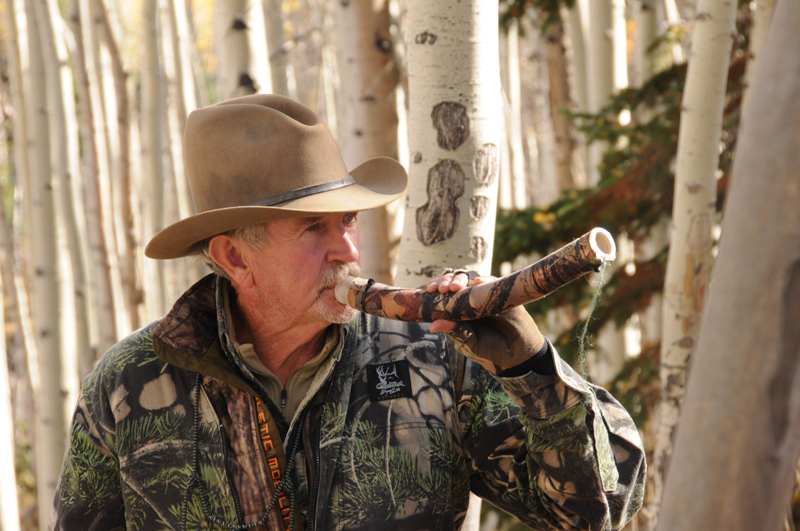
Final Thoughts
Whether your calling style involves aggressively bugling at bulls or luring them in with assembly mews, the best elk calls allow you to make a wide range of vocalizations. You might have to try a few before landing on one that sticks, but starting with these picks from experts can get you that much closer to calling in a bull.
